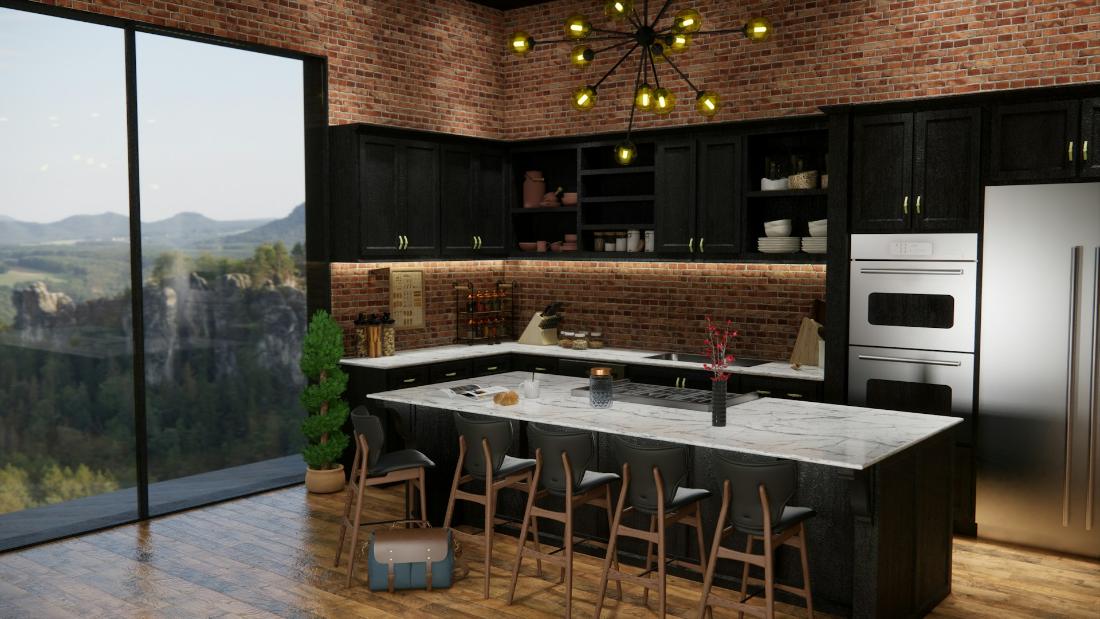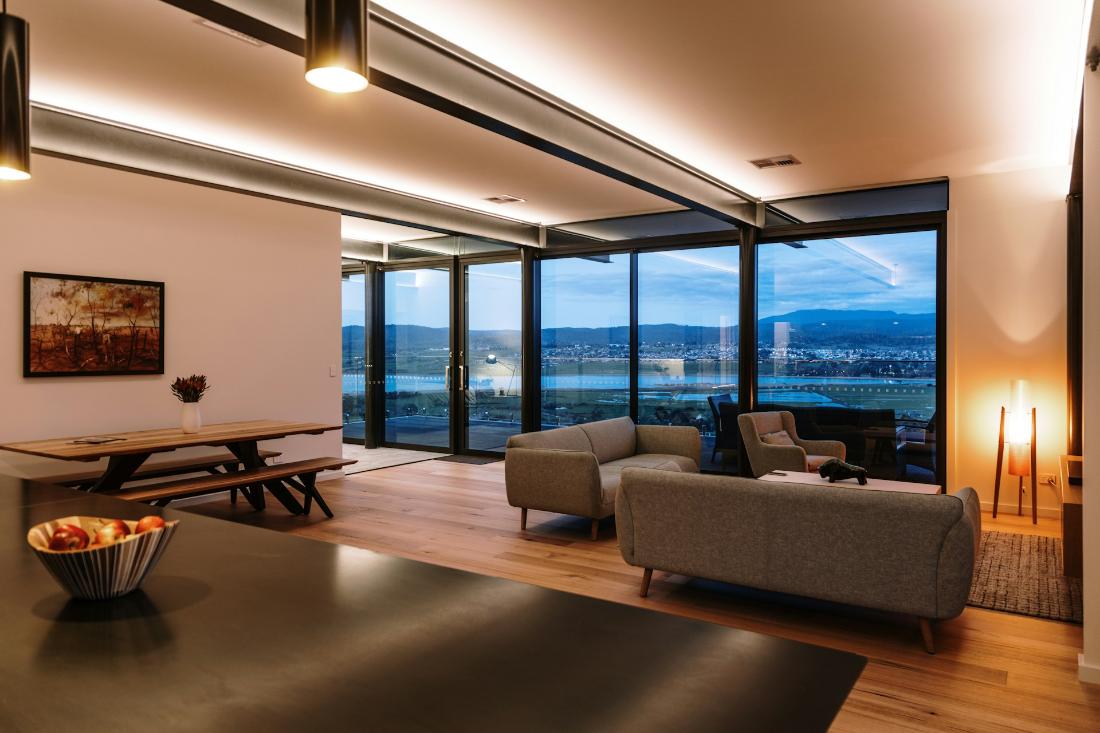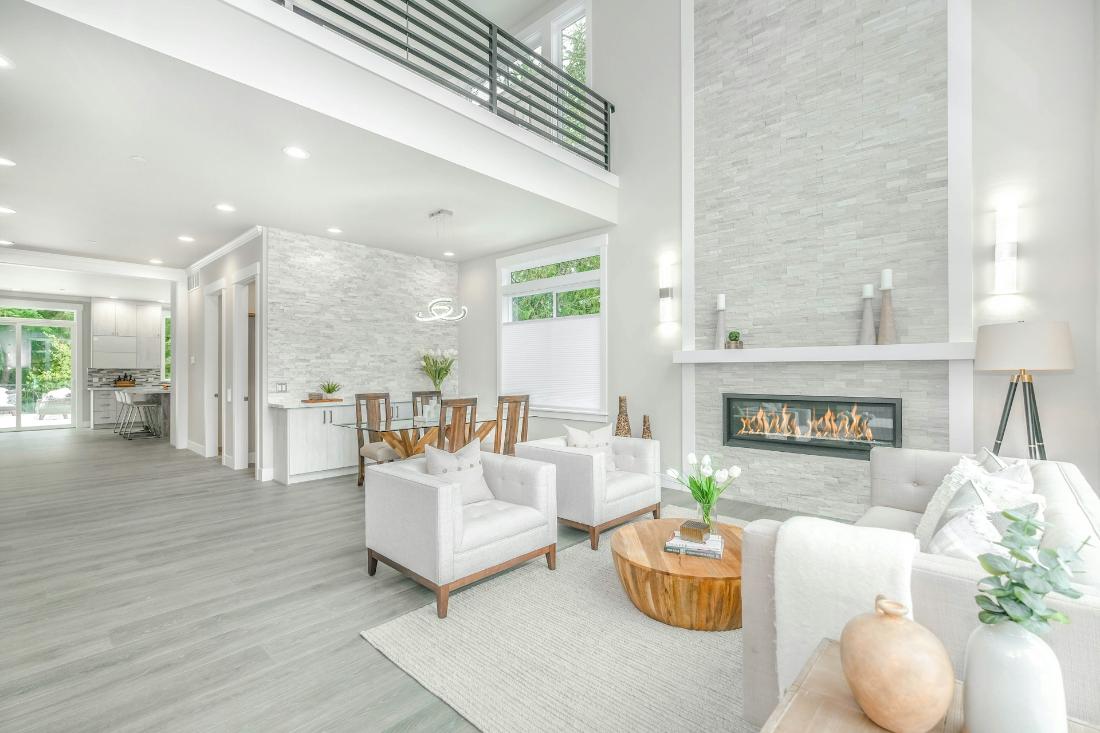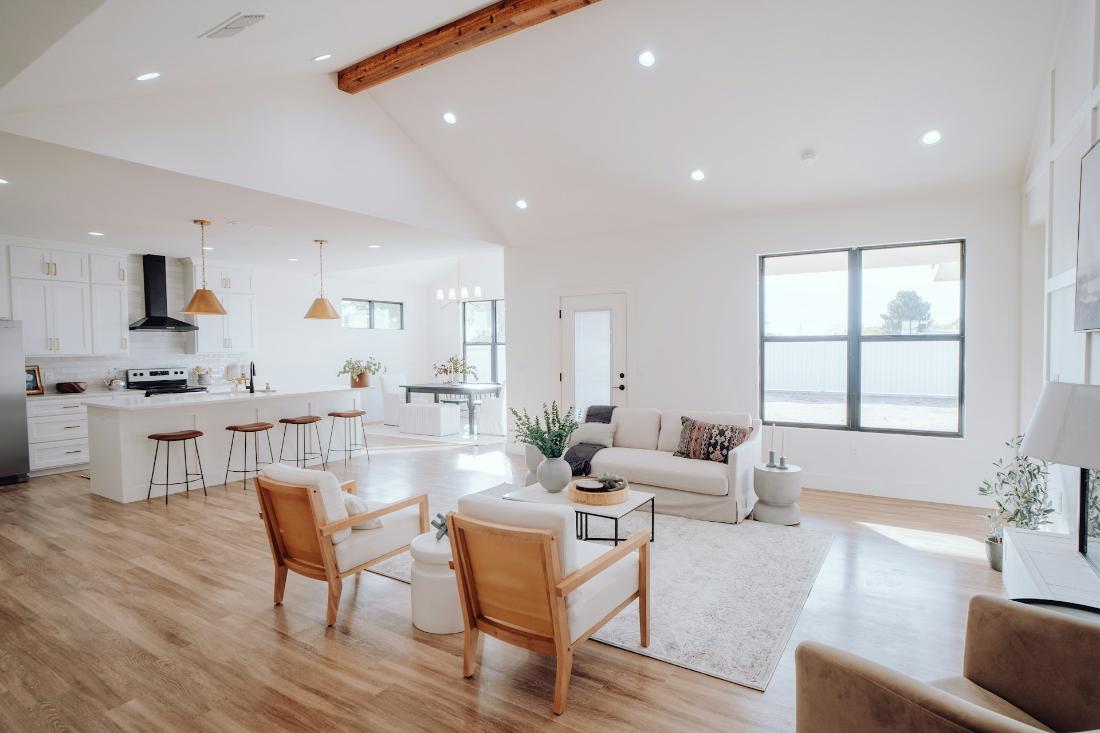Living Room
The Art of Home Design in Malaysia: Creating Living Spaces for the Modern Malaysian Family
May 9 2025
The Art of Home Design in Malaysia: Creating Living Spaces for the Modern Malaysian Family
The afternoon sun filters through wooden louvers in a renovated terrace house in Petaling Jaya, casting intricate shadows across a living space that perfectly balances modern aesthetics with traditional Malaysian sensibilities. This harmonious blend represents the essence of contemporary home design in Malaysia - where cultural heritage meets functional living in a tropical climate. Across the nation, from high-rise condominiums in Kuala Lumpur to kampung houses in Kelantan, Malaysian homes are being reimagined to reflect changing lifestyles while respecting local traditions and environmental conditions.
Understanding the Malaysian Context
Home design in Malaysia cannot be separated from the country's unique geographical and cultural landscape. The tropical climate presents both opportunities and challenges for homeowners and designers alike. Long sunny days allow for beautiful natural lighting, but the intense heat and humidity demand thoughtful solutions for thermal comfort. Heavy monsoon rains require robust waterproofing, while maximizing natural ventilation becomes crucial for maintaining pleasant indoor temperatures without excessive reliance on air conditioning.
Cultural preferences also play a significant role in shaping Malaysian homes. The concept of "rumah terbuka" (open house) during festive seasons influences many designs to accommodate large gatherings. Privacy considerations in multi-ethnic neighborhoods affect window placements and boundary walls. Religious practices may require dedicated prayer spaces, while the Malaysian love for food often makes the kitchen a central focus of home life rather than just a utilitarian space.
Evolution of Malaysian Home Styles
Malaysian residential architecture has undergone remarkable transformation over the decades. Traditional Malay houses, built on stilts with intricate wood carvings and steeply pitched roofs, were perfectly adapted to the local climate. The colonial era introduced elements like covered verandas and high ceilings that remain influential today. Post-independence saw the rise of the ubiquitous terrace house, while recent decades have brought contemporary interpretations that blend these various influences.
Today's most thoughtful home designs in Malaysia respect this architectural heritage while incorporating modern innovations. Architects might reinterpret the traditional "anjung" (veranda) as a contemporary outdoor living space, or use modern materials to echo the patterns of traditional wood carvings. The best designs don't simply copy Western styles but adapt them intelligently to local conditions - for instance, using brise-soleil sunshades instead of large glass facades that would turn homes into greenhouses.
The afternoon sun filters through wooden louvers in a renovated terrace house in Petaling Jaya, casting intricate shadows across a living space that perfectly balances modern aesthetics with traditional Malaysian sensibilities. This harmonious blend represents the essence of contemporary home design in Malaysia - where cultural heritage meets functional living in a tropical climate. Across the nation, from high-rise condominiums in Kuala Lumpur to kampung houses in Kelantan, Malaysian homes are being reimagined to reflect changing lifestyles while respecting local traditions and environmental conditions.
Understanding the Malaysian Context
Home design in Malaysia cannot be separated from the country's unique geographical and cultural landscape. The tropical climate presents both opportunities and challenges for homeowners and designers alike. Long sunny days allow for beautiful natural lighting, but the intense heat and humidity demand thoughtful solutions for thermal comfort. Heavy monsoon rains require robust waterproofing, while maximizing natural ventilation becomes crucial for maintaining pleasant indoor temperatures without excessive reliance on air conditioning.
Cultural preferences also play a significant role in shaping Malaysian homes. The concept of "rumah terbuka" (open house) during festive seasons influences many designs to accommodate large gatherings. Privacy considerations in multi-ethnic neighborhoods affect window placements and boundary walls. Religious practices may require dedicated prayer spaces, while the Malaysian love for food often makes the kitchen a central focus of home life rather than just a utilitarian space.
Evolution of Malaysian Home Styles
Malaysian residential architecture has undergone remarkable transformation over the decades. Traditional Malay houses, built on stilts with intricate wood carvings and steeply pitched roofs, were perfectly adapted to the local climate. The colonial era introduced elements like covered verandas and high ceilings that remain influential today. Post-independence saw the rise of the ubiquitous terrace house, while recent decades have brought contemporary interpretations that blend these various influences.
Today's most thoughtful home designs in Malaysia respect this architectural heritage while incorporating modern innovations. Architects might reinterpret the traditional "anjung" (veranda) as a contemporary outdoor living space, or use modern materials to echo the patterns of traditional wood carvings. The best designs don't simply copy Western styles but adapt them intelligently to local conditions - for instance, using brise-soleil sunshades instead of large glass facades that would turn homes into greenhouses.
Key Considerations in Malaysian Home Design
Creating successful home designs in Malaysia requires addressing several fundamental considerations. Climate responsiveness stands as perhaps the most critical factor. Passive design strategies like proper orientation, cross-ventilation, and thermal mass can significantly reduce energy consumption while improving comfort. Many designers are revisiting traditional Malay architectural wisdom - such as elevated structures that promote air circulation - and applying these principles in modern contexts.
Space optimization has become increasingly important as urban land prices rise and family structures change. Clever storage solutions, multi-functional furniture, and flexible room configurations help Malaysian families make the most of limited square footage. The pandemic has further emphasized the need for homes to accommodate work, study, and leisure within the same walls.
Cultural appropriateness remains essential in this multicultural nation. Designs must respect various ethnic traditions and religious practices while creating cohesive living environments. This might involve creating spaces that can be easily adapted for different uses, or incorporating design elements that reflect Malaysia's diverse heritage in harmonious ways.
Current Trends Shaping Malaysian Homes
Several notable trends are currently influencing home design across Malaysia. The indoor-outdoor living concept has gained tremendous popularity, with sliding glass doors, pocket gardens, and sheltered courtyards blurring the boundaries between interior and exterior spaces. These features capitalize on Malaysia's tropical climate while creating visually expansive living areas.
Sustainable design has moved from niche concern to mainstream expectation. Homeowners increasingly request features like rainwater harvesting systems, solar panels, and energy-efficient appliances. Many designers are specifying locally sourced materials and traditional construction techniques that naturally perform well in the local climate.
Smart home technology is being seamlessly integrated into new designs. From automated lighting and climate control to advanced security systems, these technologies are being incorporated in ways that enhance rather than complicate daily life. The best implementations consider both current needs and future upgradability.
Heritage preservation has sparked renewed interest in restoring and adapting traditional homes. Skilled designers are finding ways to maintain historical character while introducing modern comforts, creating unique living spaces that tell stories of Malaysia's architectural past.
Creating successful home designs in Malaysia requires addressing several fundamental considerations. Climate responsiveness stands as perhaps the most critical factor. Passive design strategies like proper orientation, cross-ventilation, and thermal mass can significantly reduce energy consumption while improving comfort. Many designers are revisiting traditional Malay architectural wisdom - such as elevated structures that promote air circulation - and applying these principles in modern contexts.
Space optimization has become increasingly important as urban land prices rise and family structures change. Clever storage solutions, multi-functional furniture, and flexible room configurations help Malaysian families make the most of limited square footage. The pandemic has further emphasized the need for homes to accommodate work, study, and leisure within the same walls.
Cultural appropriateness remains essential in this multicultural nation. Designs must respect various ethnic traditions and religious practices while creating cohesive living environments. This might involve creating spaces that can be easily adapted for different uses, or incorporating design elements that reflect Malaysia's diverse heritage in harmonious ways.
Current Trends Shaping Malaysian Homes
Several notable trends are currently influencing home design across Malaysia. The indoor-outdoor living concept has gained tremendous popularity, with sliding glass doors, pocket gardens, and sheltered courtyards blurring the boundaries between interior and exterior spaces. These features capitalize on Malaysia's tropical climate while creating visually expansive living areas.
Sustainable design has moved from niche concern to mainstream expectation. Homeowners increasingly request features like rainwater harvesting systems, solar panels, and energy-efficient appliances. Many designers are specifying locally sourced materials and traditional construction techniques that naturally perform well in the local climate.
Smart home technology is being seamlessly integrated into new designs. From automated lighting and climate control to advanced security systems, these technologies are being incorporated in ways that enhance rather than complicate daily life. The best implementations consider both current needs and future upgradability.
Heritage preservation has sparked renewed interest in restoring and adapting traditional homes. Skilled designers are finding ways to maintain historical character while introducing modern comforts, creating unique living spaces that tell stories of Malaysia's architectural past.
Room-by-Room Design Approaches
The Malaysian living room often serves multiple purposes - family gathering space, entertainment area, and sometimes even formal reception area. Designs increasingly favor flexible layouts with movable partitions or furniture that can adapt to different occasions. Ceiling heights and window placements are carefully considered to create a sense of spaciousness while maintaining thermal comfort.
Kitchens have transformed from utilitarian spaces to the heart of many Malaysian homes. The popularity of open-plan designs reflects changing lifestyles where cooking becomes a social activity. Practical considerations like durable, easy-to-clean surfaces remain important, but aesthetics now play an equally significant role.
Bedrooms in Malaysia require particular attention to creating restful retreats from the tropical heat outside. Thoughtful window treatments, proper insulation, and ceiling fan placements all contribute to comfortable sleeping environments. Many designers are incorporating small seating areas or study nooks to increase functionality.
Bathrooms are being reimagined as personal spas rather than just functional spaces. High humidity makes proper ventilation crucial, while material choices must balance aesthetics with mold resistance. The growing popularity of rain showers and freestanding tubs reflects increasing emphasis on relaxation and self-care.
Overcoming Common Design Challenges
Malaysian homes face several recurring challenges that require creative design solutions. Limited natural light in dense urban areas can be addressed through light wells, reflective surfaces, and strategic artificial lighting plans. Noise pollution from busy streets might be mitigated with soundproofing materials and buffer zones in floor plans.
Small land parcels in cities demand vertical design thinking - using height rather than footprint to create spaciousness. Mezzanine levels, loft spaces, and tall storage solutions help maximize every square foot. Many designers are finding innovative ways to create the illusion of space through mirrors, glass elements, and open visual connections between areas.
Balancing privacy and openness presents another common challenge, particularly in terrace houses and condominiums. Creative screening solutions, from traditional wood latticework to modern laser-cut metal panels, allow light and air while maintaining visual privacy.
The Malaysian living room often serves multiple purposes - family gathering space, entertainment area, and sometimes even formal reception area. Designs increasingly favor flexible layouts with movable partitions or furniture that can adapt to different occasions. Ceiling heights and window placements are carefully considered to create a sense of spaciousness while maintaining thermal comfort.
Kitchens have transformed from utilitarian spaces to the heart of many Malaysian homes. The popularity of open-plan designs reflects changing lifestyles where cooking becomes a social activity. Practical considerations like durable, easy-to-clean surfaces remain important, but aesthetics now play an equally significant role.
Bedrooms in Malaysia require particular attention to creating restful retreats from the tropical heat outside. Thoughtful window treatments, proper insulation, and ceiling fan placements all contribute to comfortable sleeping environments. Many designers are incorporating small seating areas or study nooks to increase functionality.
Bathrooms are being reimagined as personal spas rather than just functional spaces. High humidity makes proper ventilation crucial, while material choices must balance aesthetics with mold resistance. The growing popularity of rain showers and freestanding tubs reflects increasing emphasis on relaxation and self-care.
Overcoming Common Design Challenges
Malaysian homes face several recurring challenges that require creative design solutions. Limited natural light in dense urban areas can be addressed through light wells, reflective surfaces, and strategic artificial lighting plans. Noise pollution from busy streets might be mitigated with soundproofing materials and buffer zones in floor plans.
Small land parcels in cities demand vertical design thinking - using height rather than footprint to create spaciousness. Mezzanine levels, loft spaces, and tall storage solutions help maximize every square foot. Many designers are finding innovative ways to create the illusion of space through mirrors, glass elements, and open visual connections between areas.
Balancing privacy and openness presents another common challenge, particularly in terrace houses and condominiums. Creative screening solutions, from traditional wood latticework to modern laser-cut metal panels, allow light and air while maintaining visual privacy.
The Design Process in Malaysia
Successful home design projects typically follow a structured yet flexible process. Initial consultations focus on understanding the family's lifestyle, needs, and aspirations. Site analysis examines environmental factors like sun paths, prevailing winds, and surrounding context.
Concept development translates these understandings into spatial relationships and massing studies. Design refinement then focuses on materials, details, and interior elements. The best designers maintain open communication throughout this process, ensuring the final design truly reflects the homeowners' vision while incorporating professional expertise.
Selecting the Right Design Professional
Choosing a designer or architect requires careful consideration. Relevant experience with similar projects and locations provides valuable insight into how well a professional understands specific challenges. Portfolio review offers clues about design sensibility and attention to detail.
Personal chemistry matters significantly in what is often a months-long collaboration. Homeowners should feel comfortable expressing ideas and concerns while trusting the designer's expertise. Clear communication about budgets, timelines, and expectations from the outset helps prevent misunderstandings later.
The Future of Malaysian Home Design
Emerging trends suggest several directions for Malaysian home design. Climate-adaptive architecture will likely incorporate more passive cooling strategies and resilient materials as temperatures rise. Flexible spaces that can adapt to changing family needs or even generational living arrangements will become increasingly important.
Technological integration will continue evolving, with homes becoming more responsive and connected. However, the most successful designs will use technology to enhance rather than replace human-centered living experiences.
Cultural fusion will likely produce even more interesting hybrid designs as Malaysia's architectural identity continues evolving. The homes of the future may blend traditional wisdom with cutting-edge innovation in unexpected and delightful ways.
Conclusion: Designing for the Malaysian Way of Life
Great home design in Malaysia goes beyond aesthetics or trends - it creates spaces that enhance daily life while responding intelligently to local conditions. The best designs tell stories about who lives there while providing comfort, functionality, and beauty.
Whether renovating a heritage property or building a contemporary dream home, Malaysian homeowners now have unprecedented opportunities to create living spaces that truly reflect their identities and aspirations. By combining professional expertise with personal vision, and respecting both tradition and innovation, today's home designs are shaping how Malaysians will live for generations to come.
Successful home design projects typically follow a structured yet flexible process. Initial consultations focus on understanding the family's lifestyle, needs, and aspirations. Site analysis examines environmental factors like sun paths, prevailing winds, and surrounding context.
Concept development translates these understandings into spatial relationships and massing studies. Design refinement then focuses on materials, details, and interior elements. The best designers maintain open communication throughout this process, ensuring the final design truly reflects the homeowners' vision while incorporating professional expertise.
Selecting the Right Design Professional
Choosing a designer or architect requires careful consideration. Relevant experience with similar projects and locations provides valuable insight into how well a professional understands specific challenges. Portfolio review offers clues about design sensibility and attention to detail.
Personal chemistry matters significantly in what is often a months-long collaboration. Homeowners should feel comfortable expressing ideas and concerns while trusting the designer's expertise. Clear communication about budgets, timelines, and expectations from the outset helps prevent misunderstandings later.
The Future of Malaysian Home Design
Emerging trends suggest several directions for Malaysian home design. Climate-adaptive architecture will likely incorporate more passive cooling strategies and resilient materials as temperatures rise. Flexible spaces that can adapt to changing family needs or even generational living arrangements will become increasingly important.
Technological integration will continue evolving, with homes becoming more responsive and connected. However, the most successful designs will use technology to enhance rather than replace human-centered living experiences.
Cultural fusion will likely produce even more interesting hybrid designs as Malaysia's architectural identity continues evolving. The homes of the future may blend traditional wisdom with cutting-edge innovation in unexpected and delightful ways.
Conclusion: Designing for the Malaysian Way of Life
Great home design in Malaysia goes beyond aesthetics or trends - it creates spaces that enhance daily life while responding intelligently to local conditions. The best designs tell stories about who lives there while providing comfort, functionality, and beauty.
Whether renovating a heritage property or building a contemporary dream home, Malaysian homeowners now have unprecedented opportunities to create living spaces that truly reflect their identities and aspirations. By combining professional expertise with personal vision, and respecting both tradition and innovation, today's home designs are shaping how Malaysians will live for generations to come.



